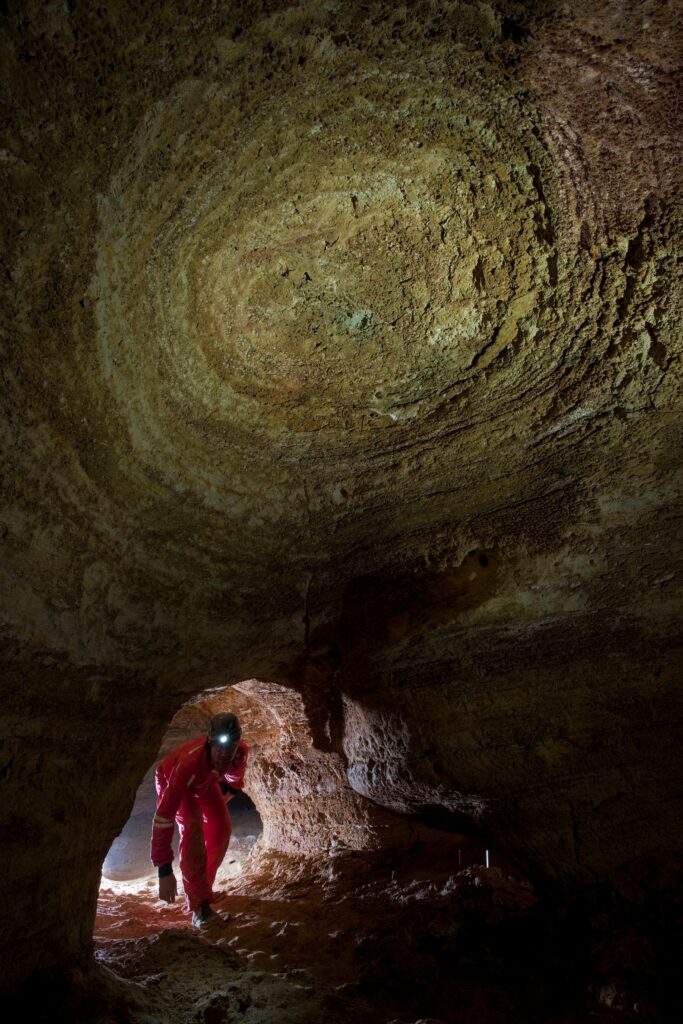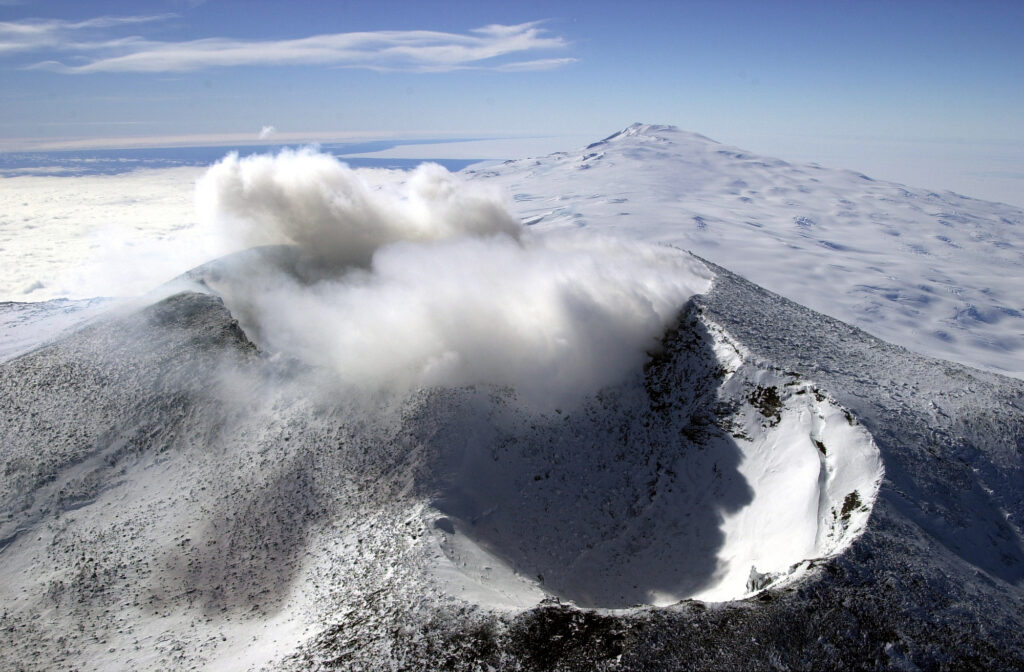The Earth holds countless secrets, some of which continue to puzzle scientists and researchers alike. Each of these wonders has a story that baffles, intrigues, and inspires further exploration. They are scattered across the globe, showcasing Earth’s unique ability to defy explanation. These remarkable phenomena not only draw visitors but also spark the curiosity of researchers seeking answers to Earth’s unexplained mysteries.
Sailing Stones of Death Valley, USA

In the desolate Racetrack Playa of Death Valley, stones appear to move across the cracked ground, leaving long, winding trails behind them. Despite their weight, ranging from a few pounds to hundreds, the stones seem to glide across the surface without human or animal interference. Researchers believe a combination of rare weather conditions, thin ice sheets, and strong winds enable this phenomenon, but no one has witnessed the stones in motion. The trails left behind are puzzlingly straight or curved, further deepening the mystery. This phenomenon highlights the interplay of climate and geology in an extraordinary desert setting.
Movile Cave, Romania

Discovered in 1986, Movile Cave near Mangalia is a sealed underground ecosystem unlike any other. Its air is toxic, rich in hydrogen sulfide and carbon dioxide, yet it harbors an abundance of unique organisms. Over 30 species of insects and crustaceans, many found nowhere else, thrive in this dark, sulfur-rich environment. Scientists are mystified by how life evolved in such extreme isolation, cut off from sunlight for millions of years. The cave’s microbial mats, which form the base of its ecosystem, may hold clues to life in extreme conditions, including on other planets.
Great Blue Hole, Belize

The Great Blue Hole is a massive underwater sinkhole off the coast of Belize, measuring over 1,000 feet wide and 400 feet deep. This circular abyss captivates divers and geologists alike with its sheer size and enigmatic origins. Believed to have formed during the last Ice Age, when sea levels were significantly lower, the hole’s submerged caves offer glimpses into ancient Earth. Its deep blue color and near-perfect circular shape further add to its allure. Despite numerous expeditions, questions about its exact formation processes and unexplored depths remain unanswered, leaving it a favorite among geological mysteries.
Lake Hillier, Australia

Lake Hillier, located on Middle Island in Western Australia, is famous for its bright pink hue that contrasts sharply with the surrounding blue ocean. Unlike other pink lakes, its vibrant color remains consistent year-round. Scientists attribute the unusual pigmentation to a combination of algae and bacteria, but the exact chemical interactions remain uncertain. The lake’s high salinity makes it uninhabitable for most organisms, yet it provides an environment for these hardy microorganisms to thrive. While it’s closed to swimming, Lake Hillier remains a visually stunning and scientifically perplexing wonder.
Yonaguni Monument, Japan

Off the coast of Yonaguni Island in Japan lies a submerged structure resembling an ancient city, with sharp edges, terraces, and straight lines. Discovered in the 1980s, this underwater site has sparked intense debate among scientists and archaeologists. Some believe it is a natural formation shaped by tectonic activity and water erosion, while others argue it represents the remnants of an ancient civilization. The absence of definitive artifacts has kept the mystery alive. Yonaguni Monument continues to fascinate researchers and divers, serving as a captivating example of Earth’s ability to blur the line between natural and man-made.
Fairy Circles of Namibia

The barren grasslands of Namibia are dotted with circular patches of bare soil, known as fairy circles. These circles, ranging from a few feet to over 30 feet in diameter, are surrounded by a ring of lush grass, creating a stark contrast. While local folklore attributes the circles to supernatural forces, scientists have proposed theories involving termite activity, plant competition, or underground gas emissions. No single explanation fully accounts for their consistent size and spacing across vast areas. The mysterious circles remain a living laboratory for researchers trying to unravel this phenomenon of nature.
Devil’s Kettle Waterfall, Minnesota, USA

Nestled within Judge C.R. Magney State Park in Minnesota, Devil’s Kettle is a waterfall that splits into two streams. While one stream continues down the river, the other disappears into a deep hole, leaving no visible trace of where it goes. Despite dye tests and other experiments, scientists have been unable to track the water’s path underground. Some suggest it may connect to a network of subterranean channels, but the exact destination remains unknown. Devil’s Kettle exemplifies the enigmatic beauty of Earth’s hydrological systems and continues to intrigue researchers.
Danakil Depression, Ethiopia

The Danakil Depression, located in the Afar region of Ethiopia, is one of the hottest and most inhospitable places on Earth. This sun-scorched landscape features acidic hot springs, bubbling lava lakes, and vast salt plains, creating an almost alien environment. Scientists are fascinated by the extreme conditions, as they provide insight into extremophile organisms and early Earth environments. The region sits at the junction of three tectonic plates, contributing to its dynamic geothermal activity. Despite ongoing research, the precise processes shaping its unique geology remain elusive, making it a hotspot for geological and biological exploration.
Siberian Traps, Russia

The Siberian Traps in Russia represent one of the largest volcanic formations on the planet, spanning over 2 million square kilometers. These massive basalt lava flows are linked to the Permian-Triassic extinction event, which wiped out nearly 90% of life on Earth around 250 million years ago. The scale of volcanic activity that created the traps is mind-boggling, with some suggesting it was triggered by a mantle plume. However, researchers still puzzle over the exact cause of such an extensive eruption and its connection to the mass extinction. The Siberian Traps remain a monumental mystery in Earth’s history.
Eye of the Sahara, Mauritania

Known as the Richat Structure, the Eye of the Sahara is a massive, circular geological formation in the Mauritanian desert. Spanning nearly 30 miles in diameter, this feature is so prominent it can be seen from space. Initially believed to be an impact crater, further studies revealed it to be a deeply eroded geological dome. Despite this discovery, questions linger about how its nearly perfect concentric rings were formed. Its striking appearance and enigmatic origins continue to captivate geologists and spark speculation about its history.
The Mima Mounds, USA

Scattered across the prairies of North America, the Mima Mounds are mysterious, evenly spaced, dome-shaped formations. These mounds vary in size, some reaching up to eight feet in height and 50 feet in diameter. Theories about their formation range from gopher activity to seismic vibrations, but none fully explain their regularity and distribution. Native American legends often attribute them to spiritual forces, adding to their mystique. Despite extensive study, the Mima Mounds remain an unsolved geological puzzle, drawing researchers from around the world.
The Boiling River, Peru

Deep within the Amazon rainforest lies the Boiling River, a natural waterway that reaches temperatures hot enough to kill. Stretching nearly four miles, this river’s heat is not caused by volcanic activity, making it a geological anomaly. Researchers believe the water is superheated by geothermal activity far beneath the surface, but its isolated location raises questions about its specific origin. Local legends describe the river as sacred, and its unique ecosystem adds to its allure. The Boiling River offers a rare glimpse into the hidden geothermal processes of our planet.
Antelope Canyon’s Flash Floods, USA

Antelope Canyon in Arizona is famous for its stunning sandstone formations, shaped over millennia by water and wind. However, its beauty comes with a dangerous phenomenon: sudden, deadly flash floods. Even a distant rainstorm can send torrents of water surging through the narrow canyon, carving its smooth walls and transforming the landscape. Scientists study the canyon to understand how these floods contribute to erosion and geological evolution. Despite advanced monitoring, the unpredictability of flash floods continues to challenge researchers and thrill seekers alike.









